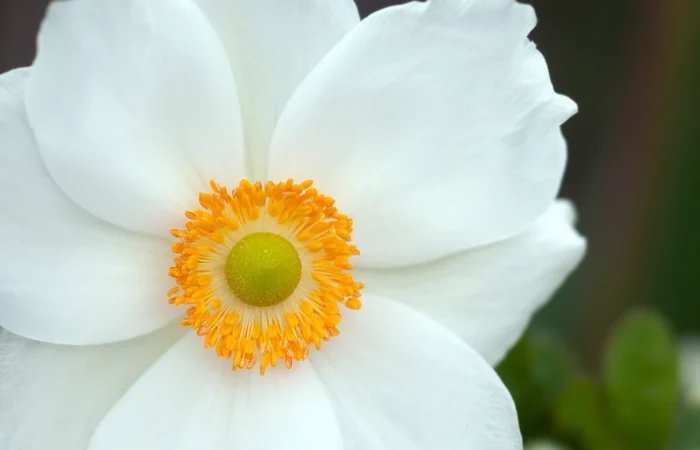Flowers have been used to convey emotions, ideas, and personality traits for centuries. While many flowers are associated with common themes like love, friendship, and happiness, some also symbolize more complex emotions and characteristics. Curiosity, a desire for knowledge, and the quest for discovery are traits that can be represented by certain flowers. In this article, we will explore the flowers that symbolize curiosity.
The Sweet Pea
A Symbol of Curiosity.One of the flowers most commonly associated with curiosity is the Sweet Pea. With its delicate petals, vibrant colors, and delightful fragrance, the Sweet Pea has long been admired for its beauty and charm. However, its association with curiosity comes from its adventurous growth patterns and fragrant appeal.
Symbolism: The Sweet Pea is often linked to positive energy, exploration, and the quest for new experiences. Its association with curiosity is rooted in its name—“pea”—which evokes ideas of growth and nourishment, suggesting a desire to explore new horizons and learn more about the world.
Characteristics: The Sweet Pea climbs and grows vigorously, much like how curiosity drives individuals to explore new ideas and experiences. This climbing nature is a metaphor for curiosity, symbolizing the reaching for new knowledge and understanding.
The Role of Sweet Pea in Victorian Flower Language
In the Victorian era, the Sweet Pea was used in floriography—the art of communicating through flowers. While Sweet Peas were often given to express thanks or well wishes, they also symbolized departure and adventure, making them an ideal representation of curiosity. The flower’s delicate yet persistent nature echoed the curiosity of the era, with individuals eager to explore the unknown.
The Victorian period was marked by significant discoveries in science, geography, and culture, and the Sweet Pea was a flower that represented the spirit of exploration and discovery, much like curiosity drives people to venture into the unknown.
Other Flowers That Symbolize Curiosity
While the Sweet Pea is the primary flower associated with curiosity, there are other flowers that symbolize discovery, learning, and the quest for knowledge. These flowers may not be as directly linked to curiosity but still capture aspects of inquisitiveness and exploration.
Daffodils
Daffodils are known for their vibrant yellow petals and association with new beginnings. They are often linked to the idea of renewal and rebirth, which can also be tied to curiosity. Daffodils symbolize the willingness to embrace new experiences, and their bloom in early spring represents the start of a journey—a time when curiosity about the world is renewed after the long winter.
Symbolism: New beginnings, curiosity about life, and hope.
Characteristics: Daffodils bloom early in the season, symbolizing the start of exploration and discovery.
Sunflowers
Sunflowers are tall, bright flowers that are known for their tendency to follow the sun throughout the day. This characteristic represents a kind of natural curiosity—their heads turn toward the light, constantly seeking out what is new and bright. Sunflowers embody a sense of openness and enthusiasm for discovery, much like a curious mind that constantly seeks knowledge.
Symbolism: Seeking knowledge, curiosity, and optimism.
Characteristics: Sunflowers’ unique heliotropic behavior (turning towards the sun) symbolizes a natural curiosity and desire for growth.
Iris
The Iris is often associated with wisdom and knowledge, making it a fitting flower to represent curiosity. Its intricate petals and rich colors have been admired for centuries, and the Iris has become a symbol of open-mindedness and the quest for understanding.
Symbolism: Wisdom, knowledge, and curiosity.
Characteristics: Irises are often associated with exploration, particularly in art and mythology, where they symbolize the connection between heaven and earth. This duality can represent the bridge between curiosity and understanding.
Curiosity in Nature: How Flowers Reflect Exploration
Curiosity is not just a human trait; it is seen throughout the natural world. Flowers, in particular, showcase many of the qualities that are synonymous with curiosity. Their growth patterns, ability to adapt, and tendency to seek out light and nutrients are all natural representations of the desire to explore and discover.
Flowers That Bloom in Unusual Places
Certain flowers bloom in the most unexpected and difficult places. These resilient flowers can be seen as symbols of curiosity because they seek out survival in environments that seem impossible. For example:
Edelweiss: Found high in the mountains, Edelweiss is often a symbol of adventure and curiosity. It grows in rocky, inaccessible areas, which shows its determination and quest for survival, much like a curious person’s quest for knowledge.
Lotus: The Lotus grows in mudd


